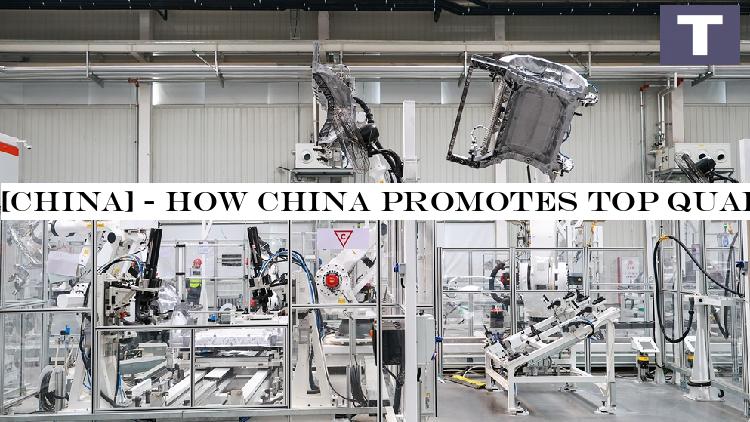
Chinas quick improvement in artificial intelligence (AI) has once again recorded worldwide attention as Jensen Huang, CEO of U.S.
tech giant Nvidia, told reporters that AI is moving extremely quickly in China throughout his continuous check out to Beijing.Huangs statement is not simply a diplomatic gesture.
Earlier this year, Chinas AI startup Deepseek gained prevalent attention, overshadowing Nvidia, one of the international leaders in AI, and triggering a sell-off in AI stocks.
This surge in Chinese innovation becomes part of a wider pattern, with companies like iFlytek, SenseTime and DJI receiving global recognition for their advances in facial recognition, voice recognition, and drone technologies.The rise of these Chinese tech companies, especially in AI, is viewed as an effective engine for the countrys high-quality advancement, which emphasizes a shift from crude to extensive development, focusing on innovation-driven development.The brand-new industries, organization models and economic formats represented by Artificial Intelligence+ are accelerating, stated Zheng Shanjie, head of the National Development and Reform Commission (NDRC), at a current press conference.Zheng kept in mind that the AI-related economys value-added output in 2024 exceeded 24 trillion yuan (roughly $3.3 trillion), comparable to the combined GDP of Beijing, Shanghai and Guangdong.Yuan Da, secretary general of the NDRC, said the development has ended up being the main driving force moving top quality development in China.According to Zheng, Chinas economy grew at a typical annual rate of 5.5 percent throughout the first four years of the 14th Five-Year Plan duration (2021-2025), and it is forecasted to see an economic increment of over 35 trillion yuan by 2025.
Landmark innovations during 14th Five-Year Plan periodThe ongoing 14th Five-Year Plan has seen significant achievements, with AI standing out as one of the essential chauffeurs of Chinas technological advancements.At the press conference, Zheng highlighted numerous landmark firsts that highlight Chinas development milestones, such as the Fujian warship –-- the first locally built warship equipped with electro-magnetic catapults, the Aida Magic City –-- the very first locally constructed big cruise ship, and the worlds leading big melted natural gas transportation ships.Zheng also noted the completion and operation of Chinas first space station, Tiangong, and the historic Change-6 mission, which effectively returned the first samples from the far side of the Moon.In addition to those firsts, the following technological developments are also worth keeping in mind: Chinas 5G innovation is leading the world, and Xiaomi EVs extremely factory (Beijing) attains a high automation with over 700 robotics working in collaboration to produce a brand-new cars and truck every 76 seconds.Innovation capabilities enhancedThe 2024 Global Innovation Index report, released by the World Intellectual Property Organization, verifies Chinas growing technological expertise.
The country now boasts 26 innovation clusters amongst the international leading 100, up from 24 in 2015, maintaining its leading rank for the second consecutive year.Behind this quick advancement is a significant boost in R&D financial investment.
In 2024, Chinas overall R&D expense reached 3.6 trillion yuan, ranking 2nd worldwide, Zheng said, adding that R&D expenditure has actually surged nearly 50 percent from 2020 to 2024, with R&D intensity striking 2.68 percent, approaching the average of OECD countries.Besides, China has enhanced its financial and tax policies to more increase technological innovation.
Given that 1996, the policy of extra reductions for business R&D expenditures has been continuously broadened, with the reduction ratio increased and procedures simplified.
In 2023, enterprises enjoyed cumulative deductions on R&D expenses amounting to 1.85 trillion yuan, demonstrating the success of these policies in motivating corporate investment in innovation.Moreover, China is actively cultivating skill in high-demand sectors.
Lots of areas have actually established AI schools and launched AI talent programs to fulfill the growing demand for knowledgeable professionals.As the 14th Five-Year Plan wanes, a new development strategy for the next 5 years will soon be developed.
Huang Qifan, scholastic advisor to the China Finance 40 Forum, stated in June that Chinas economy is poised to go into a critical stage of completely promoting the development of brand-new productive forces during the 15th Five-Year Plan (2026-2030).
Wan Zhe, an economist and professor at Beijing Normal University, highlighted that reinforcing technological development capabilities is important.
He advised China to further boost its control over core innovations, increasing the technological material and included value of products to stay competitive in the face of international technological and commercial obstacles.

 14
14







